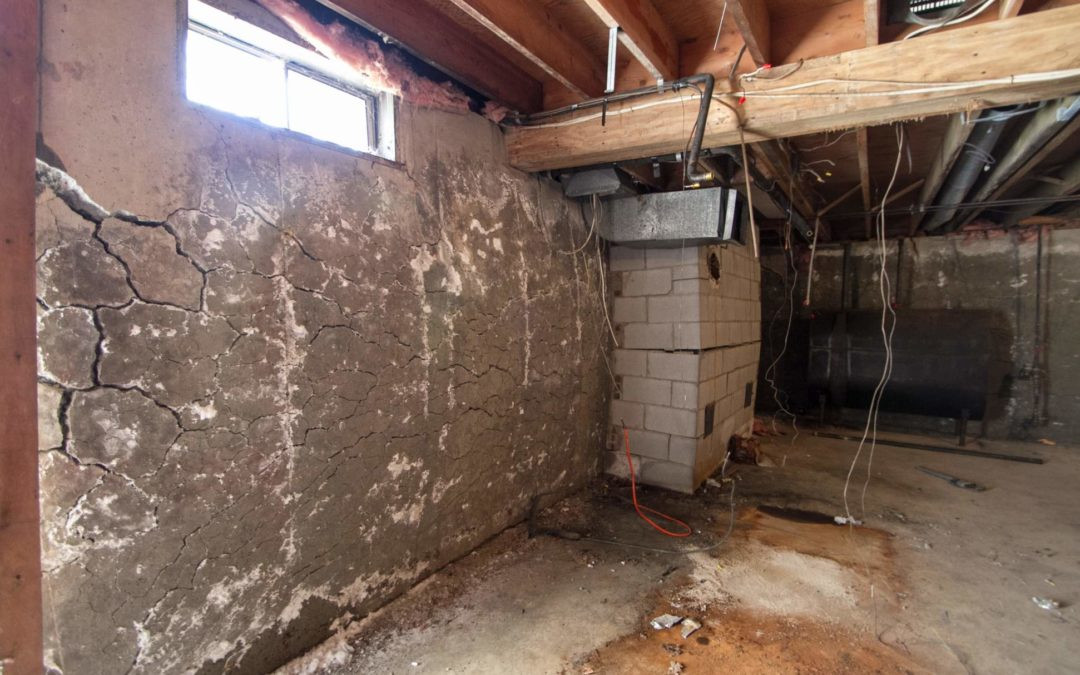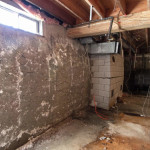The foundation is the most critical component of any structure, providing stability and support for the entire building. However, foundations can experience various issues over time due to environmental factors, poor construction, or natural wear and tear. Foundation problems are serious and, if not addressed promptly, can lead to significant damage to a building’s structural integrity. This article explores the different methods of foundation repair, the common causes of foundation problems, and the solutions available to homeowners and building managers.
The Importance of a Stable Foundation
A stable foundation ensures that a building remains level and structurally sound. It distributes the weight of the building evenly and keeps it anchored to the ground, preventing settlement, cracking, or shifting. When a foundation begins to fail, it can result in noticeable issues like cracks in walls, sloping floors, and doors or windows that no longer close properly.
Without timely foundation repair, these problems can escalate, potentially leading to catastrophic structural failures. Therefore, understanding the causes of foundation problems and recognizing the early signs is critical for maintaining the safety and value of a property.
Common Causes of Foundation Problems
There are several factors that contribute to foundation problems. Most issues arise from the soil beneath the foundation and how it interacts with moisture and environmental conditions. Understanding these causes can help property owners prevent or address foundation issues before they become severe.
1. Soil Movement
Soil movement is one of the primary causes of foundation problems. Different types of soil expand and contract at varying rates in response to moisture changes. For example, clay-rich soils tend to absorb water and expand, causing the foundation to shift or heave. Conversely, when the soil dries out, it contracts, leading to foundation settlement or cracks.
This constant shifting of the soil puts pressure on the foundation, which can cause it to move, crack, or become uneven. Homes built on expansive soils, such as clay, are particularly susceptible to these issues.
2. Poor Drainage
Improper drainage around the foundation can lead to water pooling near the base of a building. This water can seep into the soil, causing it to expand and exert pressure on the foundation. Over time, this pressure can lead to cracks and water infiltration into the basement or crawl space.
A lack of proper grading or ineffective gutter and downspout systems can exacerbate drainage problems, leading to further foundation issues.
3. Tree Roots and Vegetation
While trees and shrubs add beauty to a landscape, their roots can cause damage to the foundation. Large tree roots can grow beneath the foundation, exerting pressure and causing cracks or shifting. Additionally, vegetation near the foundation may absorb water from the soil, causing the soil to dry out and contract.
Maintaining a safe distance between large trees and the foundation is crucial for preventing root-related damage.
4. Poor Construction Practices
Foundations that are not built to code or that use substandard materials are more likely to experience problems. If the foundation is not properly designed to handle the load of the structure, or if shortcuts are taken during construction, the foundation may not be able to withstand the stresses placed upon it over time.
In some cases, poor soil compaction during construction can also lead to settlement and foundation failure.
Types of Foundation Damage
There are several types of damage that can occur to a foundation, each requiring different repair methods. Identifying the type of damage is the first step in determining the appropriate repair solution.
1. Foundation Cracks
Cracks in the foundation are one of the most common signs of damage. Not all cracks indicate a serious problem, but they should be evaluated by a professional to determine their cause and severity. Cracks can be vertical, horizontal, or diagonal, and each type suggests a different issue.
- Vertical cracks: Vertical cracks are usually caused by normal settling of the foundation and are often not a cause for concern. However, if they widen over time, they may indicate a more serious problem.
- Horizontal Cracks: Horizontal cracks are more serious and usually indicate pressure from expanding soil or water against the foundation walls. These cracks can lead to bowing or buckling of the walls and require immediate attention.
- Diagonal Cracks: Diagonal cracks are typically caused by uneven settling of the foundation. They are often found in areas where the soil has shifted or where there is poor drainage.
2. Foundation Settlement
Settlement occurs when the foundation sinks into the ground due to soil movement or poor compaction. This can cause parts of the building to become uneven, leading to sloping floors, misaligned doors and windows, and cracks in the walls.
Foundation settlement can be minor or severe, depending on the extent of the soil movement. Severe settlement may require extensive repair methods to stabilize the foundation.
3. Bowing or Buckling Walls
Bowing or buckling walls occur when pressure from the soil pushes the foundation walls inward. This is a serious issue that can compromise the structural integrity of the building. Bowing walls are often caused by hydrostatic pressure from water-saturated soil or from expansive soils that exert force on the walls.
Foundation Repair Methods
There are several methods used to repair foundation problems, each designed to address specific types of damage. The appropriate method depends on the severity of the damage, the type of foundation, and the underlying cause of the problem.
1. Piering or Underpinning
Piering, also known as underpinning, is a common method used to stabilize foundations that have settled or shifted. This process involves driving steel piers or concrete pilings deep into the ground until they reach stable soil or bedrock. The foundation is then lifted and secured onto these piers, stabilizing the structure and preventing further movement.
Piering is particularly effective for homes built on expansive soils or in areas with poor soil compaction. It can also be used to lift a foundation that has settled unevenly.
2. Slab Jacking
Slab jacking, also known as mudjacking or concrete leveling, is a technique used to lift sunken concrete slabs back to their original position. This process involves drilling small holes into the sunken slab and injecting a mixture of grout or polyurethane foam beneath it. The injected material fills the voids beneath the slab, lifting it back to its original level.
Slab jacking is commonly used for repairing sidewalks, driveways, and garage floors but can also be used for certain types of foundation repair.
3. Carbon Fiber Reinforcement
For foundations with horizontal cracks or bowing walls, carbon fiber reinforcement can be an effective solution. Carbon fiber strips are applied to the interior of the foundation walls to provide additional strength and prevent further bowing or cracking. The strips are incredibly strong yet lightweight, making them an ideal choice for reinforcing damaged walls.
Carbon fiber reinforcement is a non-invasive repair method that does not require excavation and can be completed relatively quickly.
4. Helical Piers
Helical piers are similar to steel piers but are designed with screw-like threads that allow them to be twisted into the ground. This method is used for stabilizing foundations that have settled or are built on unstable soil. The helical piers provide support to the foundation by anchoring it to deeper, more stable soil layers.
Helical piers are often used in new construction projects to prevent foundation problems from occurring in the first place.
5. Epoxy and Polyurethane Injections
For minor cracks in the foundation, epoxy or polyurethane injections can be used to seal the cracks and prevent water infiltration. Epoxy injections are used for structural cracks, as the epoxy bonds to the concrete and provides additional strength. Polyurethane injections are used for non-structural cracks, as they are flexible and can accommodate slight movement in the foundation.
Injections are a cost-effective solution for small cracks but may not be suitable for more extensive damage.
Preventing Foundation Problems
While foundation problems can develop over time, there are steps homeowners can take to prevent damage and protect their investment.
1. Maintain Proper Drainage
Ensuring that water is directed away from the foundation is one of the most effective ways to prevent foundation problems. This can be achieved by installing gutters, downspouts, and grading the landscape to slope away from the building.
2. Monitor Soil Moisture Levels
In areas with expansive soils, it is important to maintain consistent moisture levels in the soil around the foundation. Avoid letting the soil become too dry or too saturated, as both conditions can cause soil movement and lead to foundation problems.
3. Address Tree Root Issues
Plant trees and shrubs away from the foundation to prevent root damage. If large trees are already near the foundation, consider consulting an arborist to assess whether the roots pose a threat.
4. Regular Inspections
Homeowners should regularly inspect their foundations for cracks, signs of settlement, or water infiltration. Catching these problems early can prevent more extensive and costly repairs down the line.
Foundation repair is a critical task that requires professional assessment and intervention. By understanding the common causes of foundation problems, recognizing the signs of damage, and choosing the appropriate repair methods, homeowners can protect their property’s structural integrity. Whether it’s addressing minor cracks or stabilizing a sinking foundation, timely foundation repair can save homeowners from costly damage and ensure their homes remain safe and secure for years to come.
Contact the Professionals at Everdry Waterproofing of Greater Grand Rapids Today! (800) 275-7910





